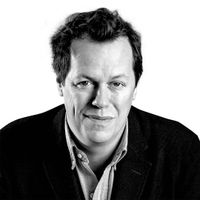Tom Parker Bowles: The pure poetry of panzanella
Impress your guests (or yourself) with this simple Tuscan classic.


It's better than any other pleasure in life, a mouthful so wondrous, so suffused with giddy, radiant joy that it surpasses any love felt for mere humans, be they friend, child or paramour. In fact, for just two blessed bites of this seraphic sensation, you would happily hurl yourself to your doom.
Yet this is neither nectar nor Manna, ambrosia nor forbidden fruit. Rather, a minced onion salad with purslane and cucumber. Better still, add a few leaves of basil and a tangle of rocket, according to Renaissance man Agnolo Bronzino, ‘and there is no contract that one would not arrange’.
OK, so the painter and poet, eulogising In Praise of the Onion sometime during the mid 16th century, has his tongue firmly in cheek. Not only, he argues, is the onion a microcosm of the world, with all its many layers, but it acted as divine inspiration for Dante (circle after circle) and Petrarch’s bittersweet verse. But the poem, with much bawdy innuendo beneath that delicately papery skin, contains the first reference to panzanella (albeit proto), the Tuscan bread-and-tomato dish that straddles the salad diaspora like a juice-soaked Colossus.
'I first met Antonio Carluccio, many moons ago, at his Neal Street Restaurant, where he taught me how to make a risotto, Marlboro Red in one hand, a glass of Barolo in the other'
As is the case with so many Tuscan dishes, panzanella is a dish of humble beginnings. Leftover stale bread would be soaked in water, squeezed dry and served in a deep dish (pane e zella, or bread and bowl) with olive oil, onions and salt. Tomatoes were very much a newcomer to the feast, scarlet arrivistes whose presence was first recorded sometime at the dawn of the 20th century. This is not to say they didn’t play an earlier role, rather that the culinary traditions of the cucina povera were overwhelmingly oral.
Anyway, purists (and this being a regional Italian dish, there are many) insist that the bread must be filone, the classic Italian sourdough — although they tend to disagree as to how long the bread, which is always torn by hand, should be soaked. Some say as little as 15 minutes, others argue for a full 48 hours. I tend to go for about an hour, so the bread still has some texture.
The onions and vinegar should be added to the tomatoes at the start, together with basil, cucumber, oil and salt. Any other embellishments — from peppers and oregano to anchovies, hard-boiled eggs and tuna — are strictly for out-of-towners and base foreigners like me. Simplicity is the key, they say. This is not the place for baroque excess.
But authenticity be damned. I have more interest in a sun-soaked gallimaufry, with panzanella as the soft-textured star of a long, languorous lunch. If you want to make it with ciabatta, throw in a spring onion or a fistful of olives or even — and whisper this one round Siena and San Gimignano — torn mozzarella, then be my guest. It’s your lunch and, as long as the bread is dense, decent and dryish, and has had enough time to mingle and get to know all those other flavours, you’ll be fine.
Exquisite houses, the beauty of Nature, and how to get the most from your life, straight to your inbox.
One non-negotiable, however, is the ripest, sweetest tomatoes you can find, the headily fragrant types that are teetering on the edge of collapse. This is not the place for the smoothly Botoxed blandness of the average red supermarket billiard ball. Where is, save the compost bin? No, this is about juice, and lashings of it, in a dish that contains the very essence of late summer. Pappy, in the best possible way, with a sly bite and an abundance of September plenty.
Panzanella
The late, great Antonio Carluccio is — together with Anna Del Conte, Angela Hartnett, Rachel Roddy and Giorgio Locatelli — one of those writers I turn to on all things Italian. I first met him, many moons ago, at his Neal Street Restaurant in Covent Garden, WC2, where he taught me how to make a risotto, Marlboro Red in one hand, a glass of Barolo in the other. It was a lesson I never forgot.
His recipe for panzanella is based on his mother’s. ‘It looked like chicken feed,’ he writes in Antonio Carluccio — The Collection, ‘but it tasted delicious and I still make it in the same way today.’ Feel free to swap the celery for a chopped cucumber, throw in a few anchovies or add a chopped chilli. I also like a good glug of red-wine vinegar, added with the soaked bread, at the start.
Ingredients
Serves 4
4 large slices of country bread, crusts removed
4 large ripe tomatoes (about 800g)
The tender centre of 1 celery head, plus leaves, coarsely chopped
10 basil leaves, chopped
10 pitted olives, green or black
1 bunch spring onions, chopped
1 yellow pepper, de-seeded and cut into fine strips
1 garlic clove, puréed (optional)
6tbspn extra-virgin olive oil
Salt and pepper
Method
1 Preheat the oven to 160˚C fan/180˚C/gas mark 4 and bake the bread for about 20 minutes, until golden. Break the cooked bread into small pieces about the size of a large sugar lump.
2 Put the tomatoes into a bowl of water that has just come to the boil and leave for 30 seconds. Pull off the skin, then chop the flesh coarsely, collecting all the juices. If your tomatoes are not very juicy, you’ll need some help with soaking the bread; try adding some tomato juice from a carton or can.
3 Mix the tomato pieces and juices together with all the other ingredients, including the bread. Leave to infuse for a few hours [or just one], so that the bread can absorb all the flavours and soften. Stir occasionally. Add salt and pepper to taste and serve cold.
Tom Parker Bowles is food writer, critic and regular contributor to Country Life.
